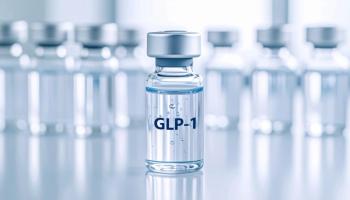
Expert: Improving Efficiency of Biosimilar Operations, Advancing Interchangeable Biosimilar Development Among Top Priorities for FDA
The biosimilar landscape is growing, but the FDA should leverage analytical data to efficiently determine the quality of these products and propel them toward approval, according to a session at the Academy of Managed Care Pharmacy’s Nexus 2023 conference.
While the FDA continues to have high standards of approval for biosimilars, the agency is concentrating efforts on making the development and approval process more efficient, said Juwaria Waheed, MD, a scientific reviewer at the Office of Therapeutic Biologics and Biosimilars with the FDA, during a session at the Academy of Managed Care Pharmacy’s Nexus 2023 Conference.
According to Waheed, having clinical trials for biosimilars is time-consuming and there are numerous limitations. However, focusing more on analytical comparability between a biosimilar and the reference product, which she describes as being the “key foundation of the biosimilar pathway,” could lead to more streamlined FDA approvals.
“The goal [is to] develop alternatives to reduce the size of studies involving human subjects, shifting from our reliance on clinical studies to being very confident in the analytical studies,” Waheed said in the session.
The FDA has approved 43 biosimilars as of October 2023, and 38 are currently available on the market. The abbreviated licensure pathway (351[k]) is the most traditional pathway of biological development, whereby the biologic will be compared against the reference product for safety and efficacy.
With comparative analytical data, investigators can evaluate structural and functional similarity between a biosimilar and the reference drug, according to Waheed. Specifically, they will assess the structural and functional similarity of each product’s proteins—if there is similar efficacy and safety between the 2 products, it may help to inform the product efficacy more efficiently than performing clinical studies, Waheed said.
“[Clinical trials] are typically the biggest, the longest, and the most expensive,” said Kimberly Maxfield, PhD, pharmacologist, FDA, who discussed the marketplace trends and regulatory considerations of biosimilars during the session.
There are 4 interchangeable biosimilars also available in the approved portfolio, Waheed said. Interchangeable biosimilar products do not have clinically meaningful differences from a biologic product and share analytical similarities and product quality standards. However, interchangeable biosimilars can be substituted for a reference product at the pharmacy without the need for a prescription from a provider, unlike biosimilars.
“[It] is very much regulatory consideration and not a difference in the quality standards,” Waheed explained in the session.
According to Chelsee Jensen, PharmD, BCPS, PRCM, senior pharmacy specialist at Mayo Clinic, these interchangeable biosimilars can reduce patient burden by increasing accessibility to the less expensive medication option.
Pharmacy specialists noted the recent launch of new low-concentration interchangeable biosimilars from Biocon as support, stating that it can “potentially increase the ease of adoption, especially in the outpatient pharmacy space where you can't maybe as readily get ahold of a prescriber, and you need to make an intervention based on a peer demand or any other situation such as that, and maybe an affordability issue.”
Advancing the development of interchangeable biosimilars and boosting the efficiency of biosimilar development are organizational goals outlined in the FDA’s Biosimilar User Fee Act III Regulatory Science Commitment letter, Maxfield said.
During the session, Jensen also reviewed the current biosimilar landscape. The average share for biosimilars launched in the past 3 years was 75%, which is markedly higher than biosimilars launched before 2019. During this time, the average share after 3 years was 39%, signifying an increase in biosimilar use over time, according to data presented in the session.
The United States still faces barriers as far as biosimilar development, affordability, and availability. Maxfield noted that during the drug development phase of the biosimilar timeline, the main barriers are cost and time. Further down the production development process, there are challenges such as getting patents and exclusivity rights, formulary access, and making health care providers aware of the biosimilar’s availability.
Payer preferences are another barrier for health care institutions, Jensen added, and it is important to maintain coverage for biosimilars with certain indications as well. Strategies for overcoming these barriers include collaborating with payer relations and optimizing the electronic medical record, according to Maxfield.
Opportunities for growth include collaborating with pharmacy benefit managers, monitoring reimbursement, and monitoring reference product patent expirations, according to Jensen. And looking forward, Jensen said that access to insulin biosimilars will become more important. She added that denosumab (Prolia/Egeva; Amgen), which is indicated for certain patients with osteoporosis, may have 9 biosimilars entering the market in 2025.
“There was a big [biosimilar] boom in 2020, a big boom in 2023, with adalimumab, [and] the next big move is probably going to come in 2025,” Jensen concluded.
Reference
Waheed J, Jensen C, Maxfield K. Biosimilar Operational Readiness: Marketplace Trends and Regulatory Considerations. Presented at: ACMP Nexus 2023 Conference; October 16 to 19, 2023; Orlando, Florida. Accessed October 18, 2023.
Newsletter
Stay informed on drug updates, treatment guidelines, and pharmacy practice trends—subscribe to Pharmacy Times for weekly clinical insights.

















































































































































































































